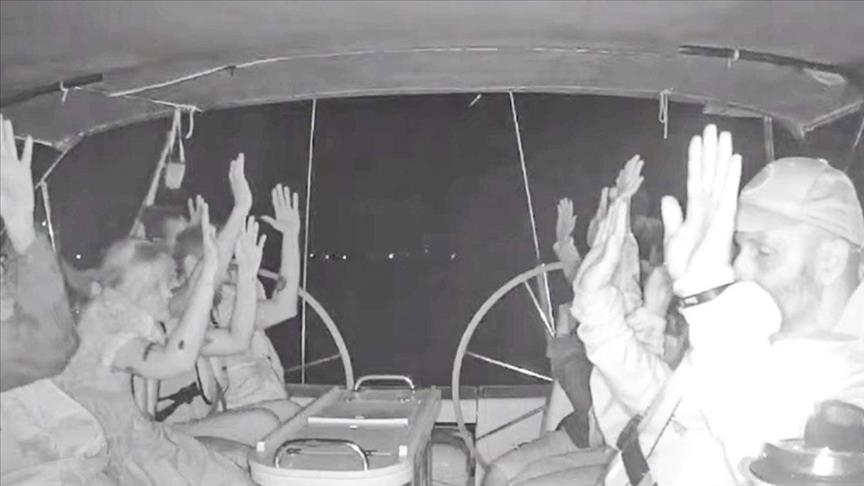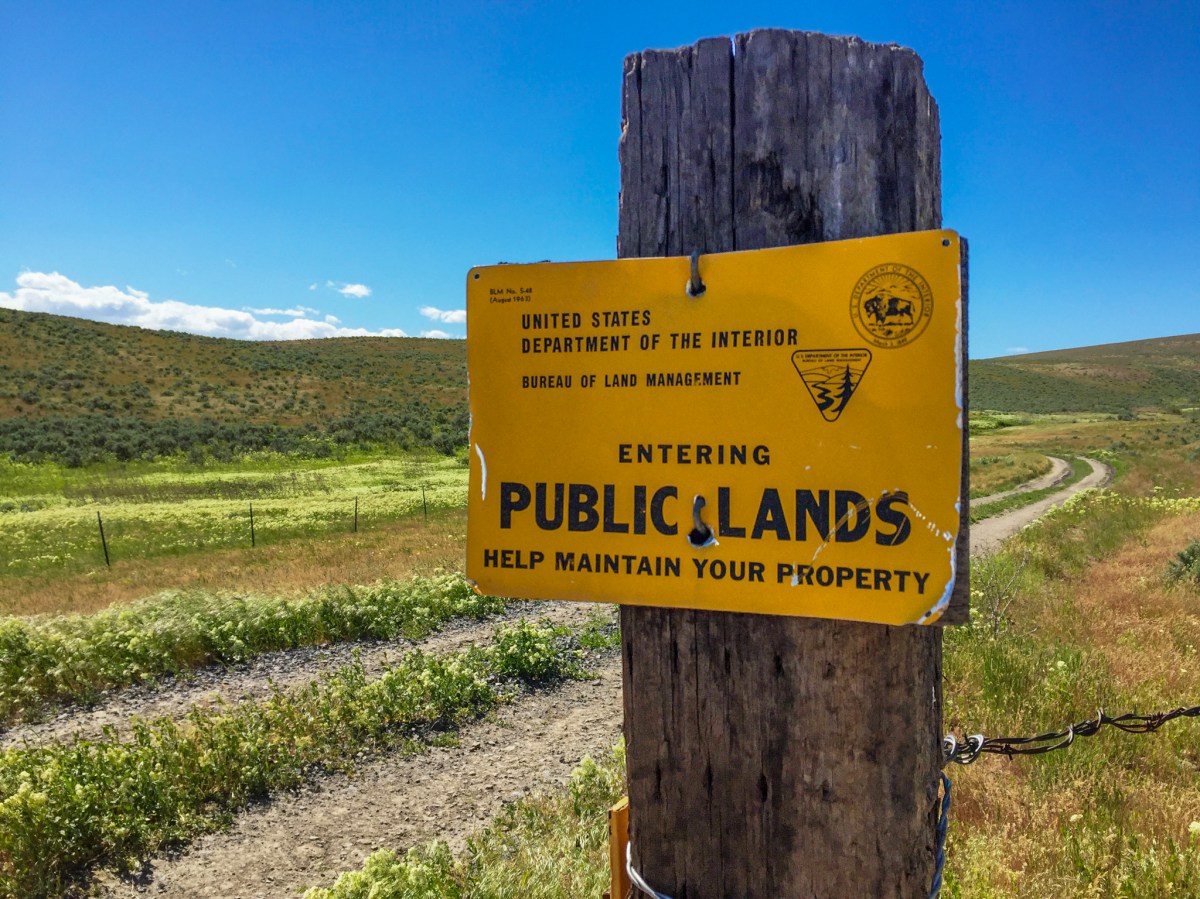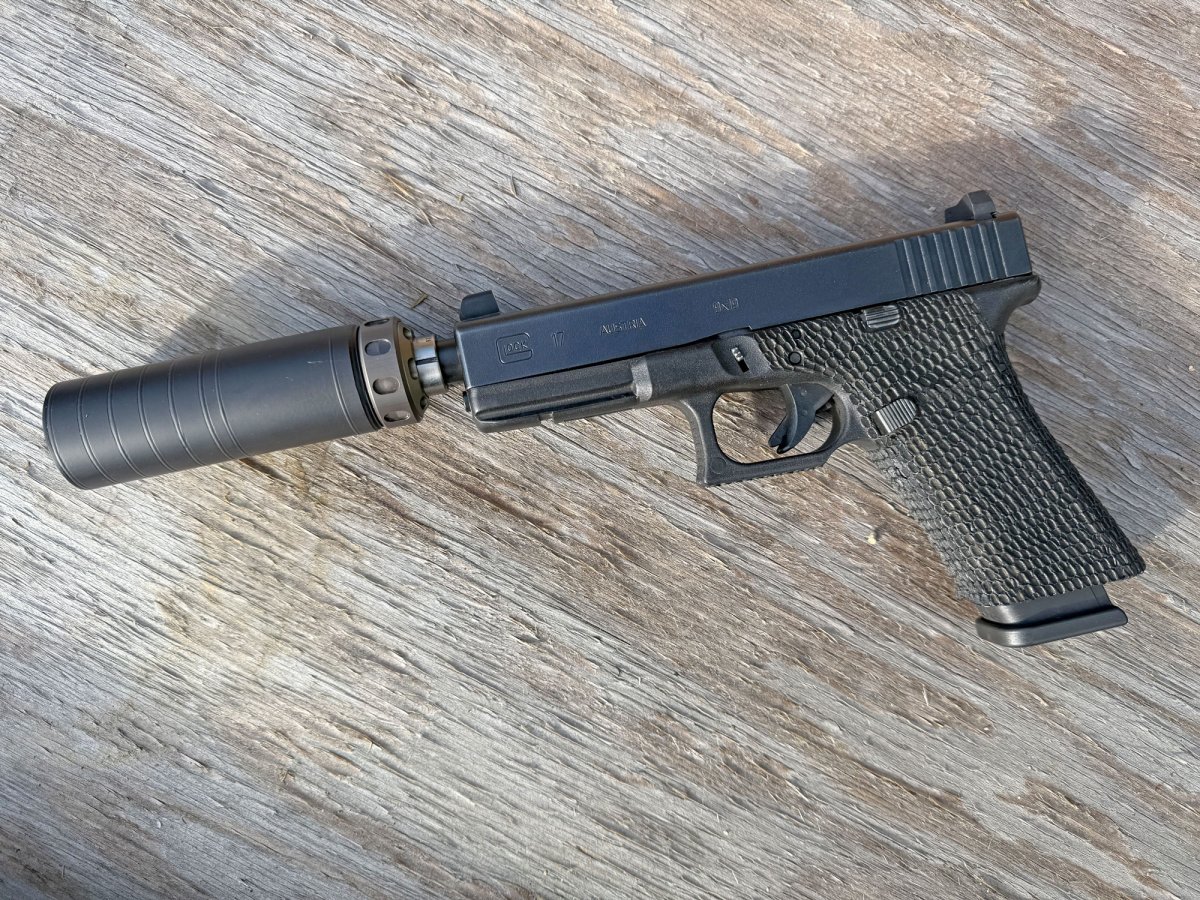After a Long Skunking, We Caught the Biggest Striper Blitz of the Fall

This story, “Day of the Monster,” appeared in the August 1960 issue of Outdoor Life.
According to all the experts, Cape Cod striped-bass fishing is supposed to reach its seasonal peak during the last part of September and the first half of October. Statistically speaking, if you average the fat and the lean years, this is true: late fall is a potent period.
On the other hand, those ornery, unpredictable critters with stripes may decide to migrate in mid-September or to hole up somewhere in the northern bays, to travel south after the beach-buggy skippers have racked their rods and called it a season. Or they may also choose to spend Indian summer days on the offshore bars, lazily ignoring small boats, plugs, baits, and the exasperation of anglers who can see them, but can’t reach them.
For many years now, I’ve fished for stripers by my own ground rules. These are: to pay due homage to the statistics which prove one season of the year potentially better than another, but to keep a suspicious eye on the changing of tides, the movement of bait, the vagaries of weather, and the unpredictable nature of stripers.
To catch striped bass consistently, or even occasionally, a man must be something of an opportunist. He must take nothing for granted, and he should be ready to move fast when the birds, the beach-buggy grapevine, or even a nagging hunch whisper that stripers may oblige.
Ralph Gray of Southville, Massachusetts, will agree, for during the 1958 season he and I saw an unusual demonstration of the pernickety nature of stripers — their moody disregard for plugs and lures on one tide and their sudden, explosive desire to strike at anything on another.
Ralph’s a beach-buggy “regular,” which means that he fishes the high surf during each weekend of the long season, and at any other time when he can manufacture an excuse to slip away from his business of drilling artesian wells.
Like so many Cape Cod fanatics, he drives a vehicle rigged for fishing — a four-wheel-drive truck fitted with oversize tires and a coach body loaded with bunks, galley, and duffel compartments. He carries an aluminum boat on a rack over the cab.
I’m editor of The Salt Water Sportsman and an outdoor writer for the Worcester Evening Gazette in Worcester, Mass. On the late-September day when this adventure began, after I’d arrived at Provincetown at the end of the Cape, I hadn’t planned on fishing with Ralph Gray. I was going it alone. As I neared the beach, there was no wind and the sun was brilliant. It felt like July instead of September, but I knew it was time for the big stripers to be gorging on butterfish and menhaden — it was the now-or-never season.
On the way to the beach, I stopped at Natalie and Joe Roderick’s service station for the latest news. Natalie and Joe aren’t striper addicts, but their store is the unofficial jumping off spot for beach buggies going out over the dunes. Natalie was tending the place, and she knew exactly what I meant when I asked, “Where are they?”
“Wind was southwest last night, so they’ll be at Peaked Hill,” she told me. “Charley saw a lot of bass on the bars last night, and Ralph had one on. Didn’t catch any, though.”
I loaded the panel truck with groceries, drove down to Race Point Coast Guard Station and let air out of my tires. Provincetown beaches are soft, and it’s often necessary to deflate to 10 pounds all around. The beach was strangely quiet. The summer people were gone, and the rolling beige and green dunes stretched away for miles. It was as lonely as the day the Pilgrims came to Race Point.
I drove over the well-packed track and hit the outer beach just west of The Cottages. The surf was gentle. No gulls were flying, no bait flipped in the wash. Maybe tonight, I thought, shifting to second speed as the track straightened.
Five minutes later I spotted the first group of buggies, maybe half a dozen huddled together on the high dunes. From a distance they always look like vehicles from a far planet.
Charley Whitney was there with his big walk-in. Joe Enis, Ralph Gray, George Geddry, and Arnold Laine were loafing in the sunlight, listening to a baseball game roaring out of a big, short-wave radio. These radios are also used to eavesdrop on local charter skippers.
Here was a hard core of “regulars,” men who seem to spend more time on the beach than they do at home. Whitney is the retired president of a trucking company in Worcester, Mass. Joe Enis runs a scrap metal business in Taunton, Mass., and Geddry is a sales executive in Washington, D. C. Arnold Laine is a living legend on the outer Cape; he makes a precarious living at commercial rod-and-line striper fishing, and some say that he catches more bass than any other surfman in the world.
We were all playing the averages, knowing that late September and early October just might produce some of the fastest striped bass fishing of the season. Huge linesiders get restless at this time of year. They sense the coming migration and tend to feed ravenously.
Charley and Ralph had been there for a week, and they were beginning to wonder. There weren’t any bass, not to catch, anyway. “But you ought to see ’em on those bars,” Charley growled. “They’re packed shoulder to shoulder, like sardines; and some of ’em are really huge.”
“Will they hit eels at night?” I asked, proud of the fact that I had a dozen fresh ones on ice.
“Too much fire in the water,” Ralph said. “That phosphorescence makes an eel look like a red-hot poker. They just aren’t hitting.”
We fished in vain for a week. We fished morning and evening tides with plugs, rigged eels, and block tin squids. We experimented with sea worms on bottom and caught a mess of skates. Every time a slick spread its telltale signal on the offshore swells we launched small boats and went out to investigate. Bass were there, but they weren’t feeding.
“They’ll eat eventually,” Ralph said, “and when they do, we’ll be here.”
But they didn’t eat, or if they did, it was surreptitiously during the few hours we slept. Ralph might be able to wait them out, but I had to get back to my job. Two more days, I decided.
On the last night of September I launched my 12-foot aluminum boat and worked my way carefully out through the offshore bars to a point opposite Pilgrim Springs, down the coast at North Truro. It was quiet and strangely bright out there. A gentle swell pulsed in from the Atlantic. The shoreside dunes were etched against the sky. I’d been casting rigged eels for a while, when another boat loomed out of the gloom. It was Ralph, also prospecting the offshore bars. We sat there, each with a hand on the other’s gunwale to hold our boats together, and enjoyed an old New England gam.
“We ought to sleep at night,” Ralph said. “Last week those fish rushed bait during the afternoon. I got my 51-pounder on a popping plug.”
A little wind puffed out of the southwest. An outboard went droning up the coast. “Listen,” Ralph whispered.
“Just a boat,” I muttered. “Guy’s quitting for the night.”
“Not that,” he said — and then I heard it.
From the southeast, not too far out, we heard an intermittent rustling and popping. A school of bass was driving bait our way. Soon we could see a long patch of black, troubled water shot with little explosions of white spray. We also saw bait shooting around the boats, each tiny fish glowing like a green ghost and trailing a comet’s tail of phosphorescence.
The stripers came racing in like a wolf pack, wallowing on the surface, slapping their tales and shooting off like rockets. It was a brilliant display, but we weren’t at all spellbound by it.
When the feeding bass ignored a rigged eel, I switched to a plug, then to a bucktail. Ralph was dropping his casts precisely, right in the convulsive boils caused by the linesiders. They wouldn’t hit; finally it was over.
By that time the wind had freshened and a skein of clouds had misted the stars. “Let’s go to bed,” Ralph grumbled, and I agreed. We yanked starter cords and planed back to our beach-buggy village. A full week of fishing without a strike! Who said stripers bite best in September?
The wind blew up a storm that night. I could feel my buggy rocking in the blast. There was rain, too, with some jagged lightning over the Atlantic, and at dawn a blood-colored sun glowered through low scud.
Arnold’s beach buggy had developed motor trouble, and in the morning he had to visit Provincetown for repairs. We went in with him. We topped off the gas tanks at Natalie’s, laid in provisions, and bought newspapers. The wind was still freshening, blowing half a gale from the southwest, and gusts of cold rain pattered against the windshield. We were bone-weary and disappointed. The stripers wouldn’t co-operate, and the weather was turning as lousy as it can get in New England in the fall. Quit and go home?
“Let’s try Pilgrim Springs,” someone suggested. “We’ll be able to cast a mile in this wind.”
“I’ll follow you out, later,” Arnold said. “Can’t tell, this weather might stir ’em up.”
We entertained no hope. This was October 1, and each of us saw the bleak ending of another season. October is a month of balmy, blue days — and line storms that part your hair down to the skull. If Cape Cod’s temperature soars to 80° on Monday, you can be pretty sure it’ll plummet to 50° on Tuesday. With wind. And rain.
Ralph led the parade, and I followed. George Geddry was trailering a big lapstrake boat behind his jeep, but the rest of us had small aluminum skiffs on our racks. You feel those boats in a high wind, and you keep wondering whether the tie-downs are secure.
There are two ways to reach Pilgrim Springs. You can drive the outer beach from Race Point Coast Guard Station, cutting up over a high dune at Peaked Hill, or you can come in from the land side, grinding through a soft-as-sugar track bordered by wild roses and bayberries. We took the latter route, so we couldn’t see the water until the track wormed its way up and over a couple of sculptured sand hills.
An angry sea was rolling in off the bars. White water spurted as combers slammed into the beach. Beyond the surf, hundreds of sea birds were circling and diving, and beneath them were swirls of foam and flashes of silver as baitfish skittered into the air. There was no doubt about it: Acres of big stripers were engaged in a feeding spree. This was the long awaited blitz.
Ralph plowed his buggy down off the high dunes, all four wheels clutching for a toehold. I followed him, and saw that the other buggies were hurtling off the height behind us. Several bogged down in the soft sand, but no one thought of shovels or planks. The boats were coming off the racks before the dust had settled.
I was frantically trying to yank the tie-downs off my skiff when Ralph yelled over his shoulder. “It’s so rough, why don’t we go out together this time? That surf is no picnic!”
I dropped everything and we man handled his 14-footer off the rack. Geddry was backing his lapstrake into the suds by the time we had our motor clamped on the transom, and rods aboard. We then loaded an anchor, buoyant seat cushions, a couple of tin squids, half a dozen plugs apiece, and a brand new gaff that hadn’t been christened.
“Take her out,” Ralph howled against the scream of the wind, and I grabbed the oars. He gauged the incoming swells, picked the right moment, and shoved off. It was a good launching. The motor started on the first pull, and Ralph throttled down as we climbed, almost vertically, up the face of a big swell. “Look at those fish,” he was yelling. “Man, this is it. It’s now or never!”
The action was nearer shore than we’d thought. Stripers were sagging in over the bar, then racing out to sea again, battering the milling bait.
School tuna weighing between 75 and 100 pounds were there too, but we wanted no part of them.
Ralph had slapped his rod in a holder as soon as we were clear of the surf, and now he flipped the free-spool lever and let the line stream back, checked only by the click. His lure was a subsurface swimming plug, and he had two dowels of lead pinched on the leader four feet ahead of the lure.
We weren’t 50 yards off the beach when Ralph’s reel shrilled in protest. He grabbed his surf rod, slapped the winch into gear and whooped as the first striper of the day began stirring up the surface. It was a big one.
The wind was whistling and our boat went scudding along. Ralph was eating a shredded cigarette as the berserk monster kept stripping line off the spool. He finally turned the fish and brought it back, pumping steadily. His medium-weight surf rod was bent almost double, and I remember thinking that the power of the striper and the force of the wind might combine to produce a sticky situation. I waited, gaff in hand.
But this was just another bass to Ralph. He’s caught some big ones, and lost a few that would have raised eyebrows. “Pretty soon, now,” he muttered between clenched teeth. I saw the leader and then the wide, brassy side of the fish.
We got him on the first pass. The gaff bit deep, but I found it difficult to haul the fish over the gunwale. Both hands turned the trick, however, and we paused to admire the first one of the day. We might have been less matter of fact about it had we known that this was the second largest striper ever taken on rod and line, and the largest whipped by a sport fisherman since 1913! At the moment, however, it was still “just another fish.” We hadn’t clocked fighting time: maybe 10 minutes, maybe 20. It was early afternoon, between 1 and 2 o’clock.
“Ought to go 50 pounds,” Ralph said. The lunker wasn’t very long as big bass go, but he was abnormally deep-bodied. The tape measure, later, said 50 inches. We’d figured that, but the girth surprised us — 34 inches. It was the scales, an hour later, that really popped our eyes: 68 ½ pounds.
I hung the next bass, a cartwheeling battler that gobbled a subsurface plug so thoroughly that we had to cut the leader and attach another lure. “At least 30 pounds,” I grinned, adding another understatement. The bass weighed in at better than 46.
We boated three more big fish before the wind hauled into the northwest, and the weather really lost its head with a series of violent rain squalls. A confused chop was building: white water exploded to port and starboard. One ragged, spitting wave came right over the bow. The birds were still around us, screaming in the wind — but we headed home.
Beach-buggy boats on Cape Cod ride the combers ashore. Miss a wave and you get swamped, but hit it right, at full throttle, and you’re in. Ralph circled on the first run. The breakers were building up and running closer together. We came around, following a big swell. Ralph poured the smoke to her, and we were committed. I held on to the gunwales anxiously. Ralph had hit the wave just right, and we rode it ashore, right on the crest. When the comber blew up beneath us, we came down as easily as if we’d had a parachute to ease the drop. Half a dozen surfmen ran to help us tote the craft above mean high water.
All hands were soaked to the skin, chattering with cold, but completely happy. Everyone seemed to have struck it rich. Joe Enis produced the scales, and that was the climax. No one in the annals of latter-day surf fishing had taken a bass as big as Gray’s. In all of angling history, only one rod-and-line striper had topped this catch — the 73-pounder boated by Charles B. Church in 1913.
It was a great day. The long awaited fall blitz seemed to be under way, and no man among us was prepared to quit and go home. We all knew, with that peculiar, fanatic determination common to surfmen, that tomorrow would bring bigger bass.
But you know something? That was the last important flurry of the 1958 striper season on Cape Cod. Like I say, you have to be an opportunist.
Read the full article here









